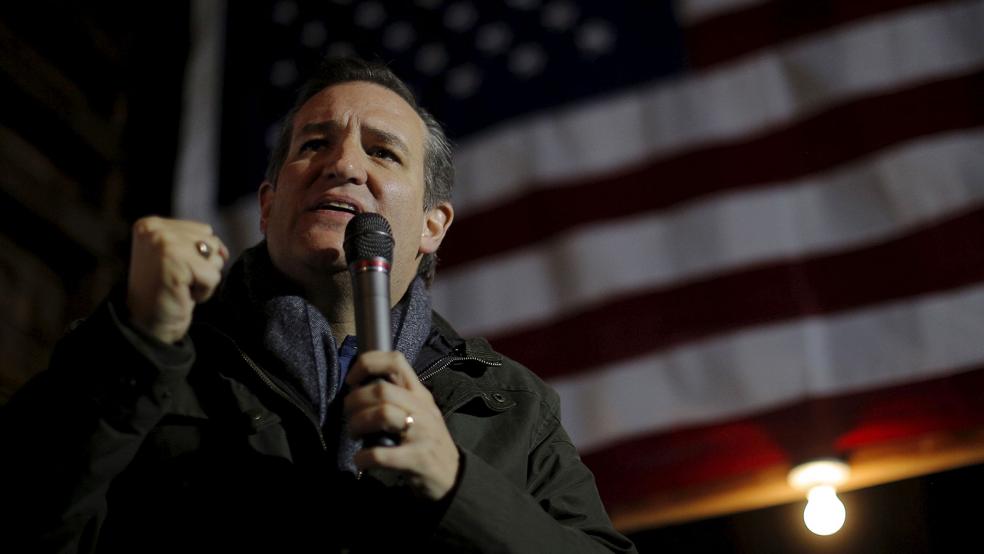The fiscal watchdogs at the Committee for a Responsible Federal Budget took a look at the various policy positions that Texas Sen. Ted Cruz has put forward since launching his campaign for the Republican presidential nomination. What they found is that under even the most generous reading, Cruz’s proposals would add trillions to the federal debt over coming years, and would require heroic assumptions about the performance of the U.S. economy going forward to even get that far.
The CRFB analysis in no way makes Cruz unique among presidential contenders. In this cycle, as in most, the numbers a campaign puts out rarely add up without the generous application of budgetary fairy dust and concentrated magical thinking.
Related: Ted Cruz Has Four Weeks to Prove he Can Win
The most favorable reading of Cruz’s proposals for immigration reform, military spending, tax reform and other changes in the way Washington operates would result in an addition of $3 trillion to the national debt over the next decade. At the other end of the spectrum, the most skeptical reading of his plans would result in the addition of $21 trillion to the debt.

CRFB goes with a “central estimate” that finds the policies Cruz has so far advocated would add about $12.3 trillion to the debt over a decade. Under current law, the country’s debt-to-Gross Domestic Product ratio is expected to be about 86 percent by 2026. The CRFB central estimate of Cruz’s plan finds that ratio would be at 131 percent by that date.
“While Sen. Cruz has called for a Balanced Budget Amendment to ‘save future generations from additional crippling debt,’ the policies listed on his website to date would, on net, add to the national debt over the next decade and beyond,” the report finds. “In order to balance the budget under his plan, aggressive spending cuts or substantial rates of economic growth would be necessary. By our estimates, spending would need to be cut by half, or economic growth accelerated four fold, in order for his plan to balance the budget.”
By far the most potentially expensive element of the Cruz platform is his proposal to switch from the current tax code to a “simple flat tax,” which virtually all tax experts regard as a European style Value-Added Tax, or VAT. At the rates Cruz has proposed, the CRFB central estimates expects an $8.3 trillion hit to the federal budget over ten years.
Related: Trump: If Cruz Keeps Cheating, I’ll Sue Him for Being Canadian
Cruz’s promise to greatly increase spending on the military would add another $2.4 trillion to the debt. That estimate doesn’t change much over the various estimates, because unlike some other proposals, this one is fairly specific.
The CRFB analysis found that just paying for Cruz’s proposals would require spending cuts amounting to between 28 percent and 52 percent under the group’s central estimate.
Cruz has also suggested that a surge in economic growth brought about by his policies would cause economic growth to spike, paying for much of it through increased tax revenues. The CRFB takes issue with that, too, noting that it would “require unprecedented levels of sustained economic growth.”
Specifically, “it would require 6.8 percent real annual growth to simply pay for our central cost estimate of the initiatives on Sen. Cruz’s website, and 9.1 percent real annual growth to balance the budget.”
Related: Trump and Cruz Strike a New Low in Presidential Politics
To put that in perspective, China, in the process of dragging its economy into the modern world, was able to average GDP growth of 9.9 percent from 1989 to 2015. The idea that a fully modern industrialized economy with an educated workforce, efficient transportation systems, functioning markets and all of the other attributes of an advanced economy that China lacked in 1989 could match that record is ludicrous.
Again, none of this puts Cruz wildly outside the mainstream when it comes to presidential platforms. It just illustrates how divorced from economic reality those platforms are.





